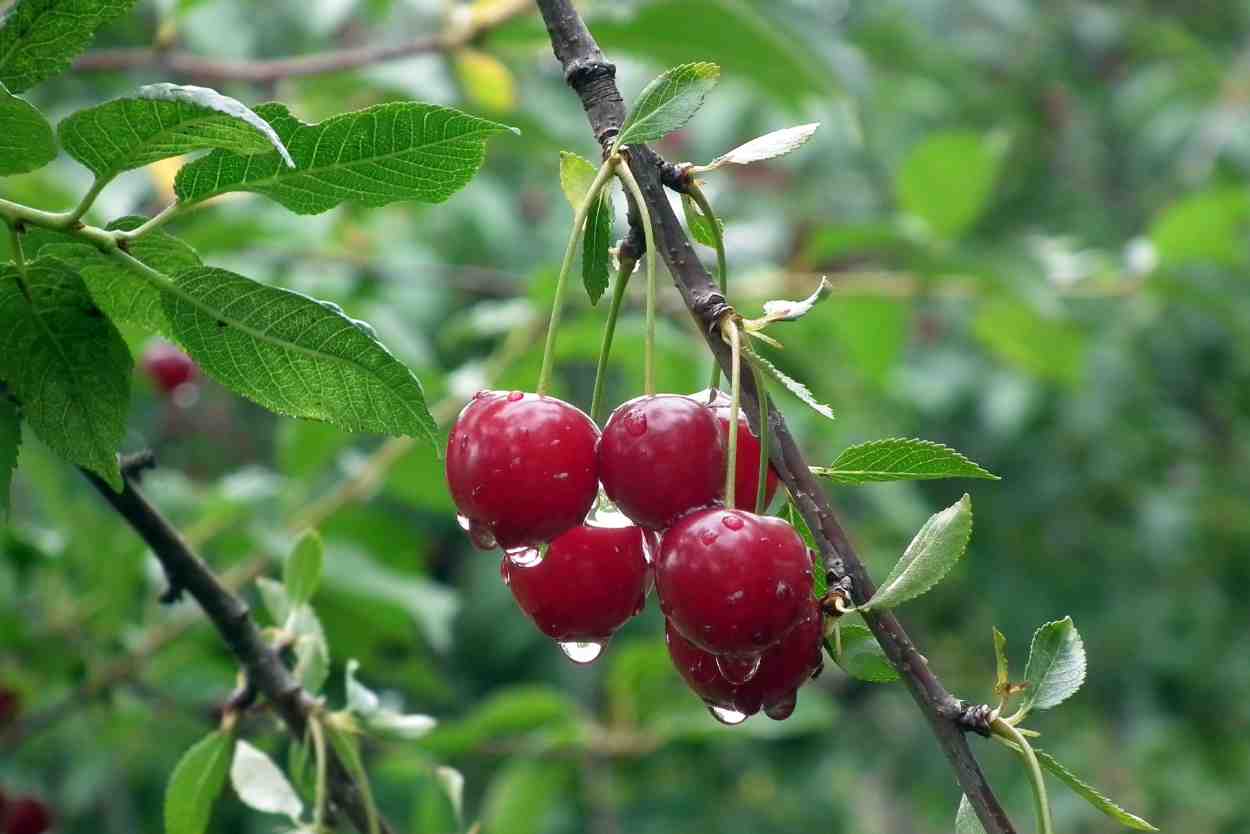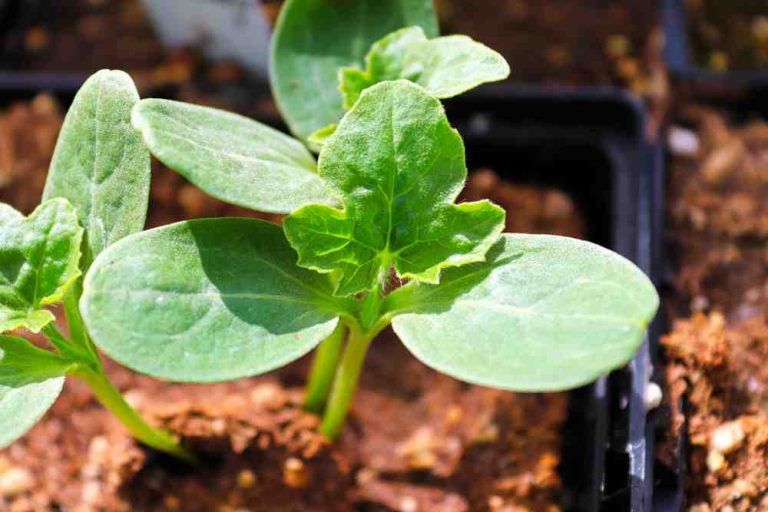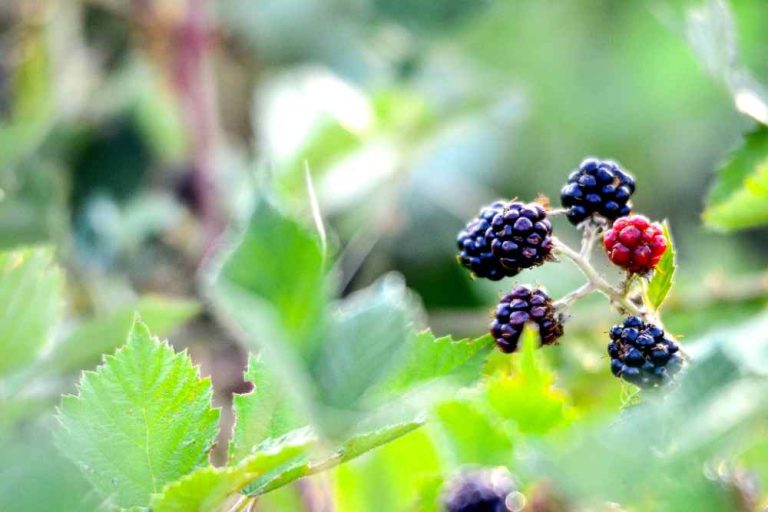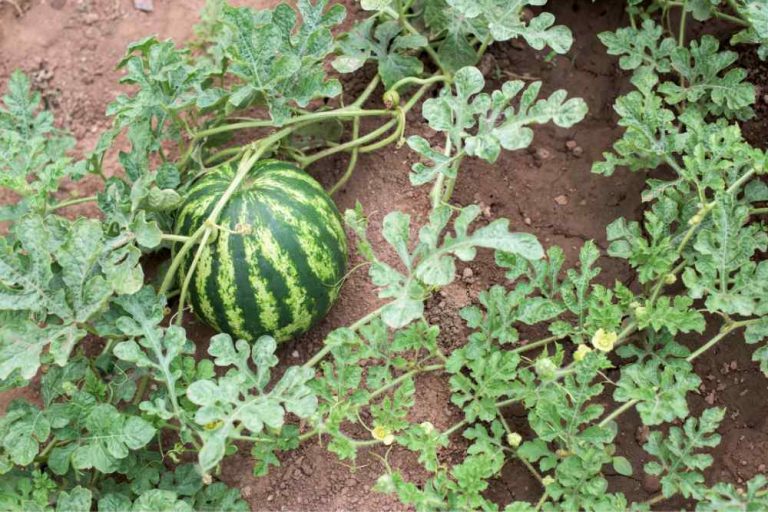Guide To Growing Fruit Trees Planting To Harvest
John Hammond, a seasoned backyard fruit tree grower, shares his wealth of experience in his Ultimate Guide to Growing Fruit Trees: From Planting to Harvesting. Drawing from his Midwest roots and a lifelong love for gardening, John provides expert advice on the best fruit tree varieties to grow in different regions and proper planting and care techniques. He also addresses the most common pests and diseases affecting fruit trees and offers tips on preventing and treating them.
As a passionate advocate for the art of fruit tree cultivation, John delves into the science behind fruit tree growth, sharing his knowledge on pruning techniques, fertilizers, and optimal harvesting times. Whether you’re an experienced gardener or a beginner, John’s Ultimate Guide is a must-read for anyone looking to cultivate their own fruit trees.
What Are The Best Fruit Varieties To Grow In My Region?
As a seasoned backyard fruit tree grower, I am often asked what the best fruit tree varieties are to grow in a particular region. And as someone who has dedicated his life to cultivating fruit trees, the answer varies depending on several factors, including climate, soil type, and available space.
Let me give you the Midwest region answer since it’s my expertise. In the Midwest, it is best suited for growing apple, pear, cherry, plum, and peach trees. These fruits thrive in the Midwest’s temperate climate, which is characterized by cold winters and warm summers. The region’s fertile soil also provides the perfect growing conditions for fruit trees.
When it comes to apple trees, some of the best varieties to grow in the Midwest include Honeycrisp, Granny Smith, and Jonathan. Honeycrisp apples are known for their sweet, juicy flavor and crisp texture, while Granny Smith apples are tart and firm, making them perfect for baking. On the other hand, Jonathan apples are sweet and tangy, with a slight hint of spice.
Bartlett and Anjou are two of the most popular varieties in the Midwest for pear trees. Bartlett pears are known for their sweet, juicy flavor and soft texture, while Anjou pears are firm and slightly tart.
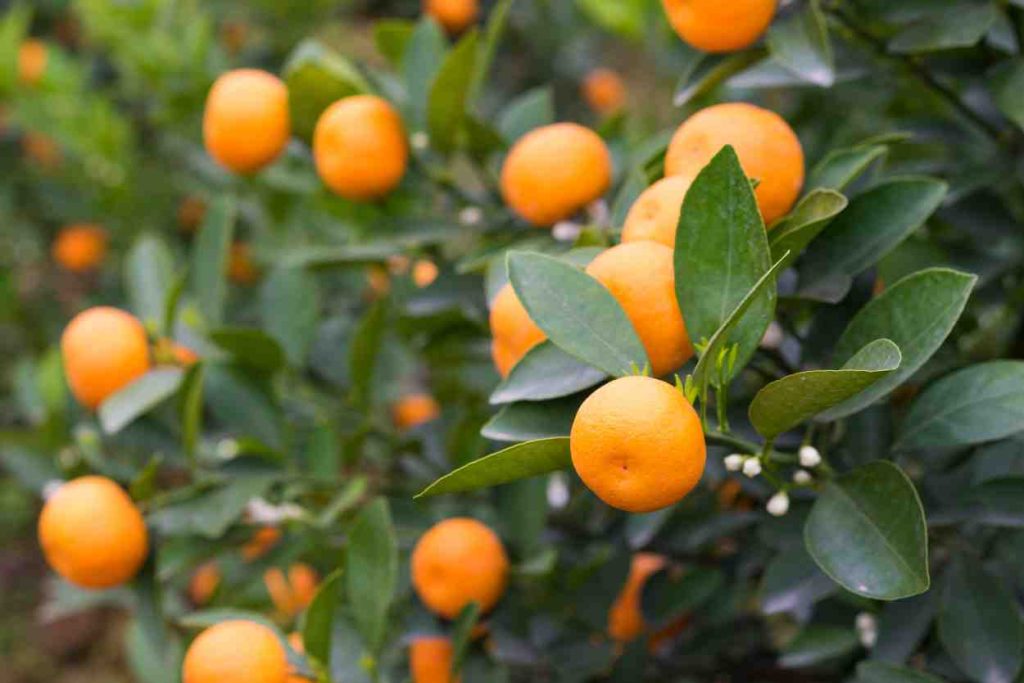
When it comes to growing cherry trees, the popular varieties include Bing, Rainier, and Montmorency. Bing cherries are dark red and sweet, while Rainier cherries are yellow with a red blush and have a sweet, delicate flavor. Montmorency cherries are tart and are often used for baking or making jams and jellies.
Plum trees, on the other hand, are best suited for growing European and Japanese varieties. European plums, such as Italian and Stanley, are sweet and flavorful, while Japanese plums, such as Santa Rosa and Shiro, are juicy and slightly tart.
Lastly, peach trees are a popular choice for Midwest growers, with some of the most commonly grown varieties such as Red Haven, Elberta, and Cresthaven. Red Haven peaches are sweet and juicy with a slight tang, while Elberta peaches are firm and flavorful. Cresthaven peaches are also sweet and juicy, with a slight hint of tartness.
Of course, these are just a few examples of the many fruit tree varieties that can be grown in the Midwest region. It is important to research each variety’s specific needs and growing conditions before planting, as some may require more attention or care than others.
How Do I Properly Plant And Care For A Fruit Tree?
The first step in planting a fruit tree is to select the correct location. Fruit trees need plenty of sunlight, so choose a spot that receives at least six to eight hours of direct sunlight each day. The soil should also be well-draining, as fruit trees do not do well in waterlogged soil. Make sure to add organic matter, such as compost or aged manure, to your thick clay soil to promote drainage.
Once you have selected the location, it’s time to plant the tree. Make a hole that is exactly as deep and twice as wide as the root ball. Carefully remove the tree from its container, careful not to damage the roots. Gently loosen any tangled roots and place the tree in the hole, making sure that the roots are spread out evenly. Fill in the hole with soil, making sure that the tree is planted at the same level as it was in the container. To assist the tree in retaining moisture, properly water it and apply a layer of mulch around the base.
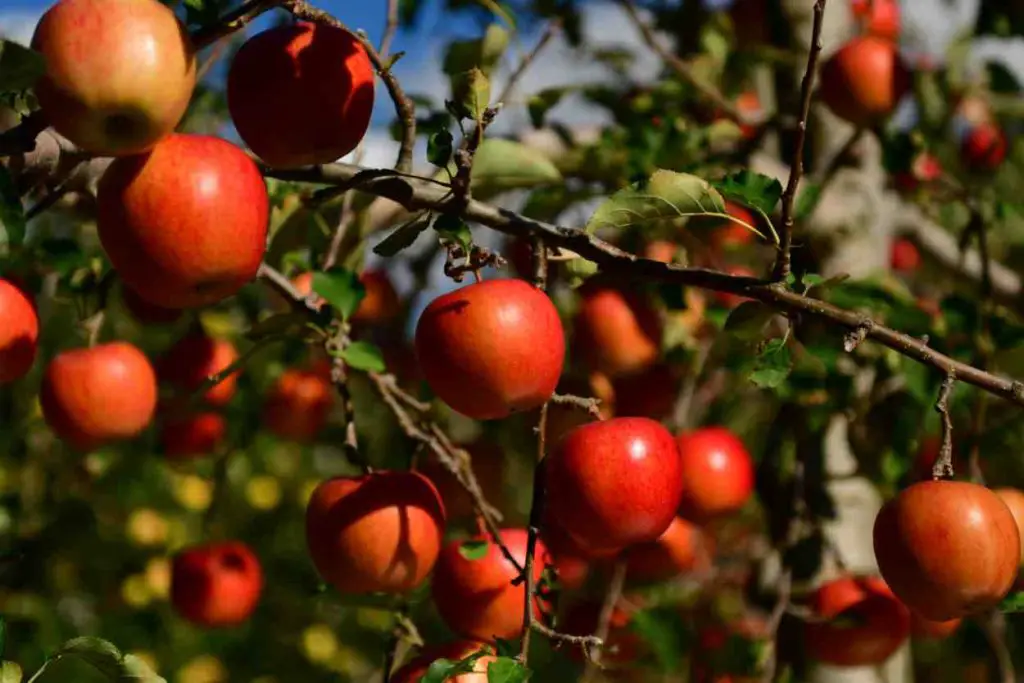
After planting, it’s important to care for the tree properly to ensure its health and growth. Regular watering is crucial, especially during the tree’s first few years of growth. Water deeply once a week, making sure that the soil is moist to a depth of at least six inches. Overwatering should be avoided since it might cause root rot and other problems.
Fruit trees also require regular fertilizer to offer the nutrients they require to thrive and produce fruit. Fruit trees benefit the most from balanced fertilizers that are composed of equal amounts of nitrogen, phosphorus, and potassium. Following the directions on the package for the right quantity to use, apply the fertilizer in the early spring and once again in the middle of the summer.
Pruning is another crucial aspect of fruit tree care. Proper pruning helps to shape the tree, promote healthy growth, and increase fruit production. Prune in late winter or early spring before the tree begins to bud. Remove any dead or diseased wood, as well as any branches that are crossing or rubbing against each other. Thin out the branches to allow for better air circulation and light penetration, which will also help to prevent disease.
Finally, pest and disease control is essential for maintaining your fruit tree’s health. Regularly inspect the tree for signs of pests or disease, such as chewed leaves, wilting, or discoloration. If you notice any issues, treat them promptly with an appropriate insecticide or fungicide, following the instructions on the package carefully.
Common Pests And Diseases And How To Prevent Or Treat Them?
First on the list is aphids, tiny bugs that can cause significant damage to your fruit trees. They feed on the sap of the leaves, causing them to wilt and turn yellow. Aphids also excrete a sticky substance called honeydew, which attracts other pests, such as ants, and can lead to mold growth. To prevent aphids from infesting your trees, regularly inspect the leaves and spray them with insecticidal soap or oil if necessary.
Next up is powdery mildew, a fungal disease that forms a powdery white coating on the leaves, stems, and fruit. It thrives in humid and damp conditions, making it a common problem in areas with high rainfall or poor air circulation. To prevent powdery mildew, prune your trees to increase airflow and avoid overhead watering. If your trees are already infected, you can use fungicides or a mixture of baking soda and water to treat the affected areas.
Another common pest that can cause significant damage to fruit trees is the codling moth. The larvae of this moth feed on the fruit, leaving behind unsightly tunnels and causing the fruit to rot prematurely. To prevent codling moth infestations, use pheromone traps to disrupt their mating patterns and apply insecticides during the appropriate times in the growing season.
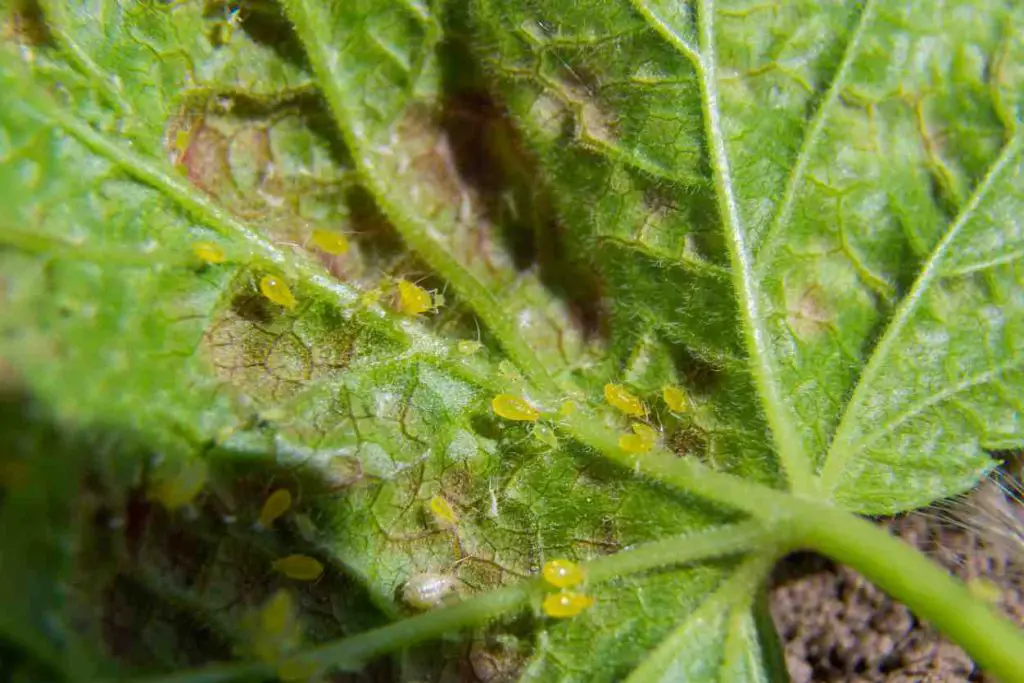
Fruit flies are another common pest that can ruin your harvest. They are attracted to ripe fruit and lay their eggs inside, causing the fruit to rot and become inedible. To prevent fruit flies, pick your fruit before it becomes overly ripe and dispose of any fallen fruit that may attract them. You can also use traps or insecticides to control their population.
Lastly, fire blight is a bacterial disease that can affect fruit trees, causing the leaves, branches, and fruit to wilt and turn black. It spreads quickly and can be challenging to control, making prevention the key to avoiding this disease altogether. To prevent fire blight, avoid pruning your trees during wet conditions and disinfecting your pruning tools between each cut. You can also use copper-based sprays to treat infected areas.
What Is The Best Time To Prune Fruit Trees And How To Do It?
The best time of year to prune your fruit trees is during the dormant season. It usually occurs in late winter or early spring. This is when the tree is not actively growing, and the leaves have fallen off, making it easier to see its structure.
Pruning during the dormant season also reduces the risk of disease and insect infestations, as the wounds will heal quickly before new growth begins. In addition, pruning during this time allows sunlight to reach the tree’s interior, promoting the growth of new fruiting wood.
Before you begin pruning your fruit trees, it is essential to have the right tools. Pruning shears, loppers, and a pruning saw are necessary for cutting through branches of varying thicknesses. It is also important to wear protective gear, such as gloves and eye protection, to prevent injuries.
When pruning your fruit trees, it is important to have a clear plan in mind. Remove any unhealthy, dead, or damaged wood first. This will prevent these issues from spreading to other parts of the tree and promote healthy growth.
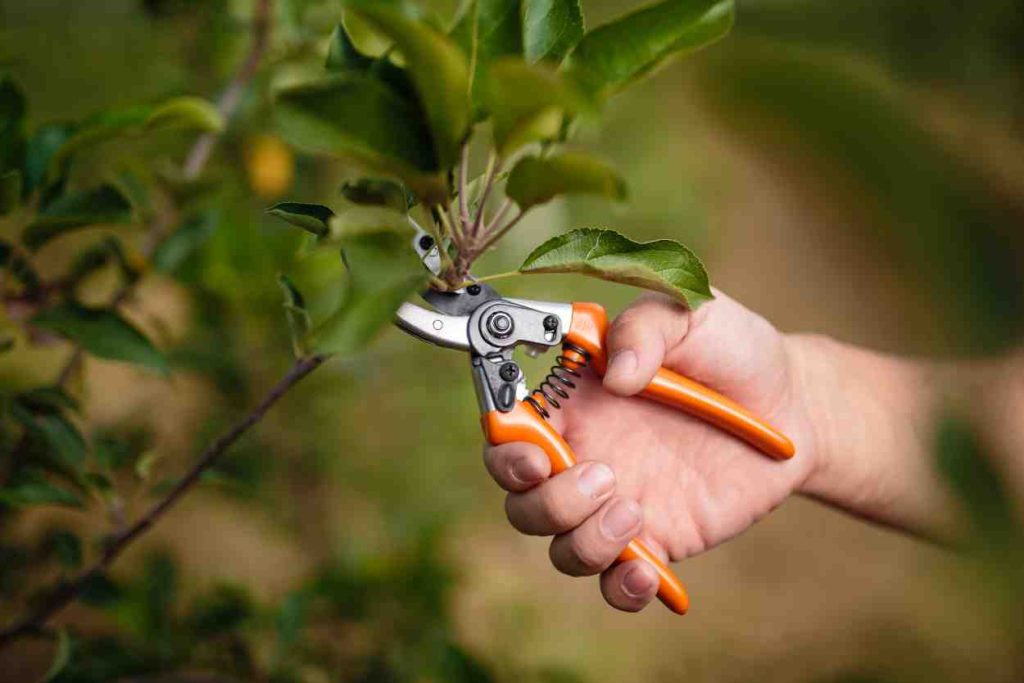
Next, prune any branches pointing inwards toward the tree’s center. This will create more open space, allow sunlight to reach the tree’s interior, and promote the growth of new fruiting wood. It is also important to thin out the tree’s canopy by removing any crossing or rubbing branches, and this will prevent damage to the tree and promote healthy growth.
When pruning fruit trees, it is important not to remove more than one-third of the tree’s canopy at once, and this will prevent shock and allow the tree to heal properly. It is also important to make clean cuts and avoid leaving stubs, which can lead to disease and insect infestations.
In addition to pruning, it is important to fertilize your fruit trees regularly, providing the tree with the necessary nutrients to produce healthy fruit. It is also important to water your trees regularly, especially during the growing season.
When Is The Optimal Time To Harvest?
First and foremost, it’s important to understand that the timing of fruit harvest varies depending on the type of fruit and your region’s climate. Generally speaking, fruit is typically harvested when it’s fully ripe, meaning it has reached its peak flavor and nutritional value.
One way to determine if your fruit is ripe is to look at its color. For example, apples should be entirely red or green, depending on the variety, while peaches should have a yellowish tinge. Another way to tell if the fruit is ready is to squeeze it gently, and if it’s slightly soft to the touch, it’s likely ripe and ready to be harvested.

However, not all fruit is as straightforward as apples and peaches. Some fruits, such as pears and plums, require a bit more finesse when it comes to determining their ripeness. For pears, you can check their ripeness by gently pressing on the neck of the fruit, and if it gives slightly, it’s ready to be picked. Plums should have a soft exterior and a sweet aroma when they’re ready to be harvested.
In addition to visual and tactile cues, the timing of fruit harvest can also be determined by measuring the sugar content of the fruit. This can be done with a refractometer, a tool commonly used by professional growers to measure the Brix level of fruit. The Brix level measures the sugar content in the fruit, and an optimal Brix level can indicate that the fruit is at its peak ripeness.
Another important factor to consider when harvesting fruit is the weather. If there’s a chance of frost or extreme temperatures, it’s best to harvest your fruit before it’s fully ripe to avoid damage. Additionally, if you’re experiencing a drought, it’s important to water your trees regularly to prevent the fruit from shriveling up and becoming unripe.
In terms of timing, it’s best to harvest fruit in the morning when the temperatures are cool, which can help preserve the quality and flavor of the fruit. It’s also important to handle the fruit gently when harvesting to avoid damaging the skin or bruising the flesh.
Overall, the optimal time to harvest fruit from your trees depends on various factors, including the type of fruit, the climate, and the ripeness of the fruit. Using a combination of visual, tactile, and scientific cues, you can ensure that your fruit is at its peak flavor and nutritional value when harvested. As a passionate fruit tree grower, I encourage you to experiment with different harvesting techniques and to always strive for the best possible quality in your fruit.
Happy harvesting, fellow growers!
- 15 Ingenious Kitchen Garden Ideas to Cultivate Freshness Right at Home - April 7, 2024
- 10 Top Picks Best Plants for Open Terrarium - April 2, 2024
- 21 Easy and Cheap Walkway Ideas for a Charming Garden - March 31, 2024

